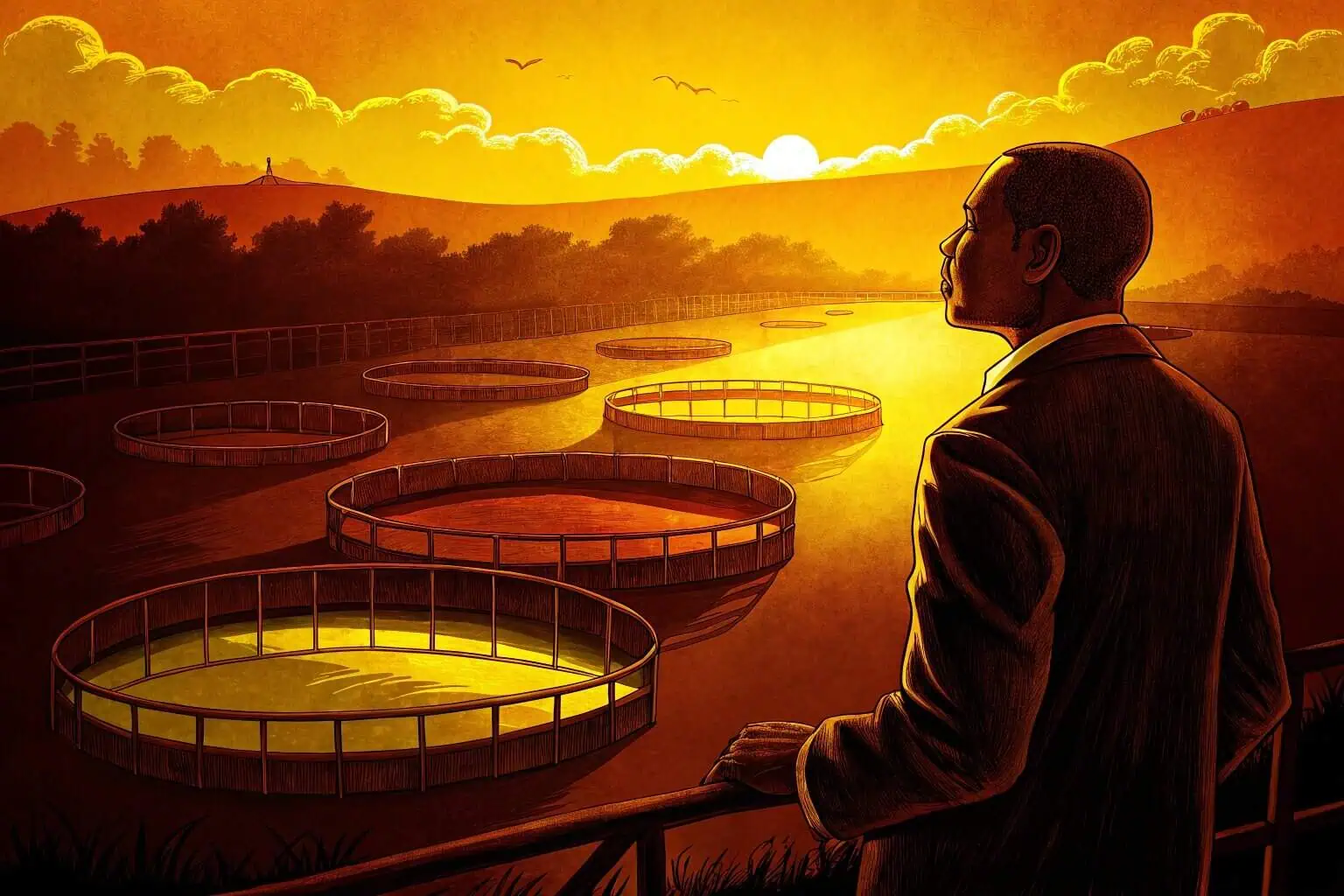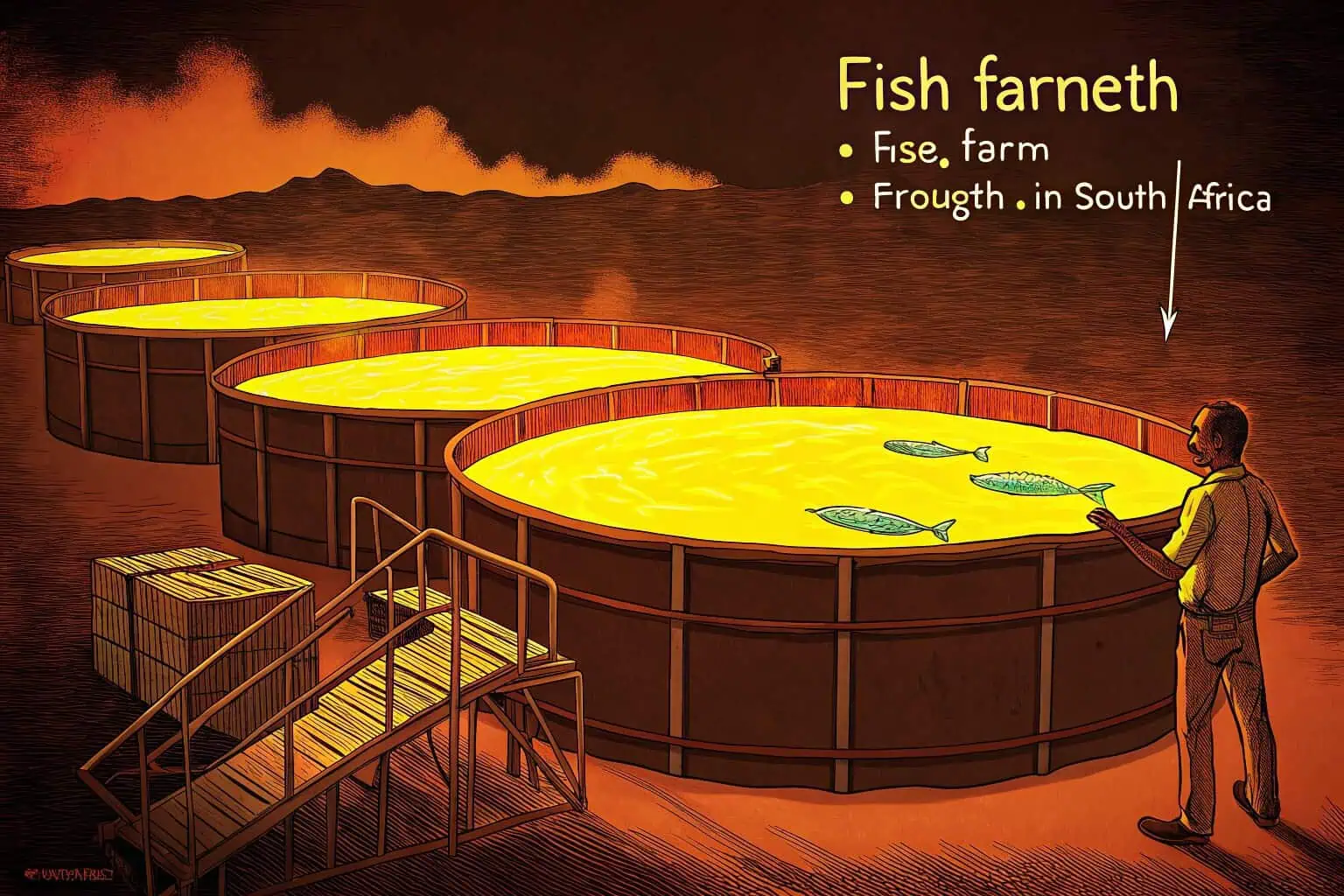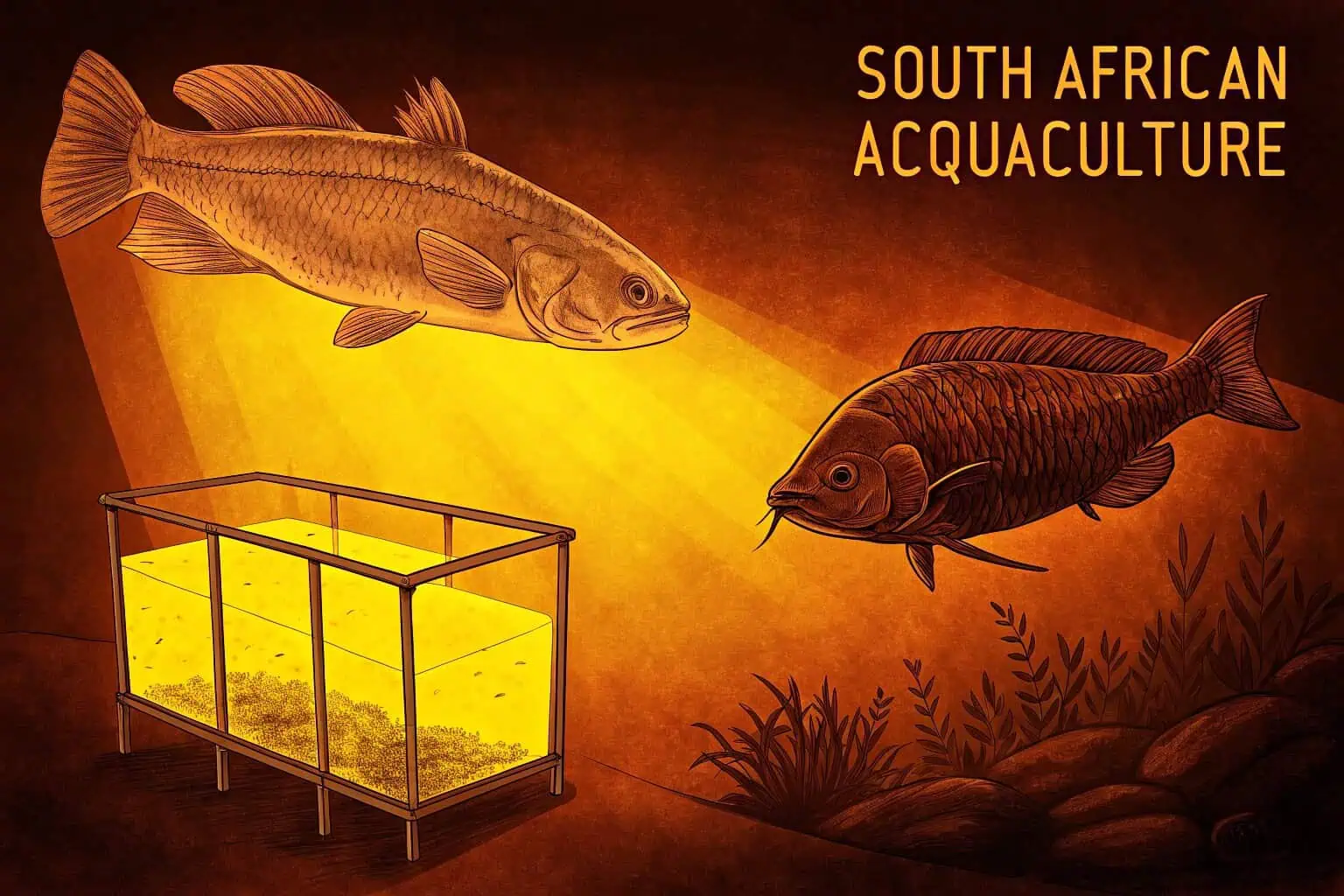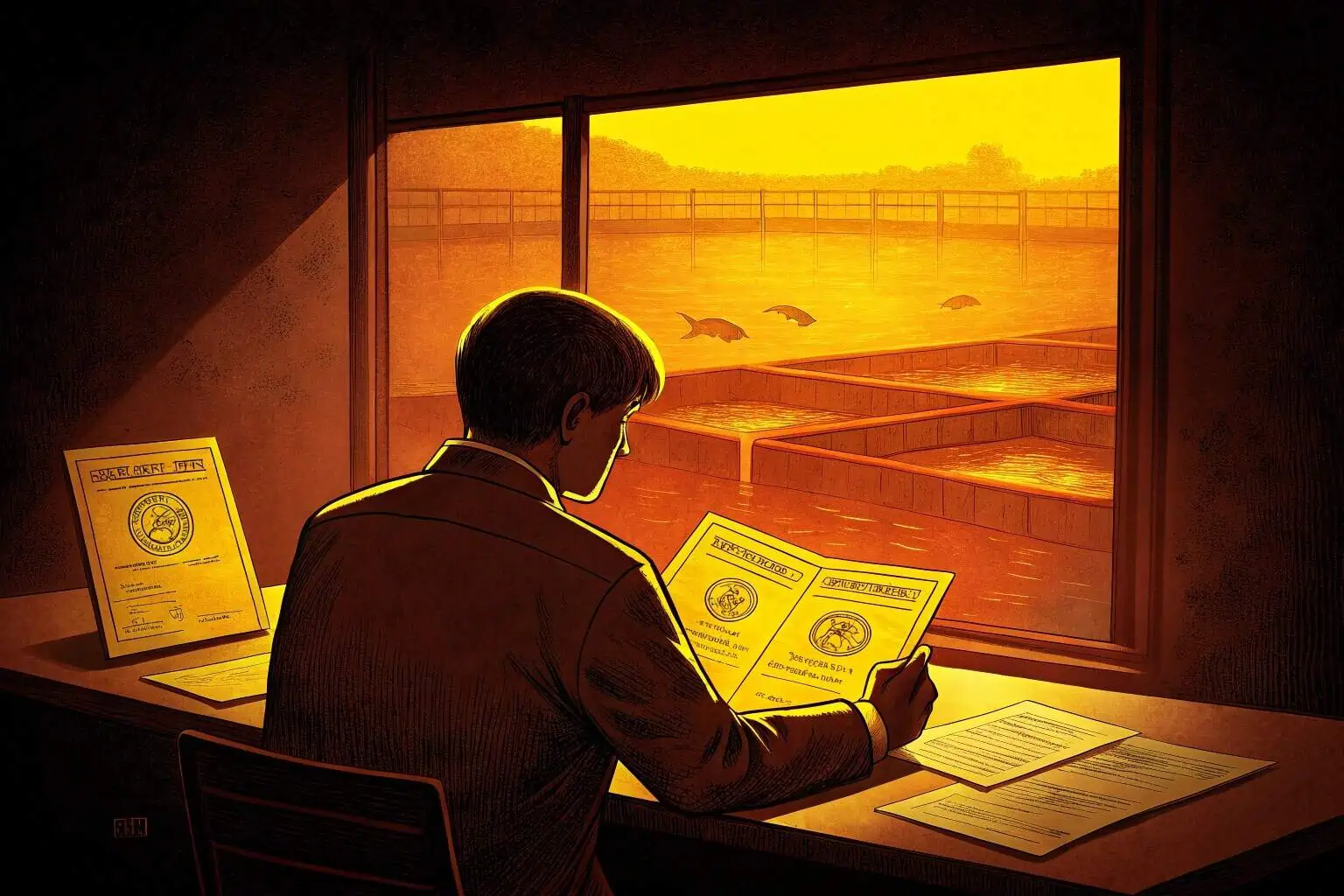How much does it cost to start a fish farm in South Africa?
Dreaming of a fish farm in SA but worried about costs? It's a common hurdle. Let's explore if this venture can turn your passion into profit.
Starting a fish farm in South Africa involves significant initial investment, varying from thousands to millions of Rands, depending on scale. Profitability hinges on managing these costs and market access.

As someone immersed in the South African fish farming industry, I am from Bancy Solutions, believe this is a sector brimming with opportunity, though it requires careful navigation. The growing demand for fish, driven by health-conscious consumers and an expanding population, makes aquaculture an attractive venture. With species like Tilapia and Catfish well-suited to our climate, there's real potential for success. Now that we've touched on the initial investment, let's dive deeper into the specifics of profitability, costs, suitable fish species, and the necessary licensing in South Africa.
Is fish farming profitable in SA?
Wondering if South African fish farming actually makes money? Many ask this. Let's see if the rewards outweigh the risks and effort involved in this industry.
Yes, fish farming can be profitable in South Africa, especially with rising demand for fish. Success depends on good management, controlling costs, and securing a market for your fish.

Profitability in South African fish farming1 isn't a given; it's earned. I've seen firsthand that while the demand for locally farmed fish is growing, several factors determine if your venture will be financially successful. My experience shows that profitability isn't guaranteed—it hinges on managing high startup costs, mastering technical skills, and ensuring a reliable market.
Key Profitability Factors
Market demand is strong. However, you're competing with established fisheries and imports. Your ability to produce high-quality fish consistently and find reliable buyers is crucial. Species like Tilapia and Catfish2 are popular and well-suited to our climate, which can boost your chances.
Cost Management
Initial setup costs can be high, and operational expenses like feed, electricity, and labor add up. Efficient management is key. For example, using our Bancy collapsible fish tanks3 can offer a cost-effective start compared to traditional concrete ponds. We at Bancy offer various types like our durable GALVANIZED PIPE FISH TANK4, robust GALVANIZED SHEET FISH TANK, and versatile COLLAPSIBLE PLASTIC FISH TANK5, which are easier to set up and can be customized to your needs.
Challenges include fluctuating market prices, disease outbreaks, and the need for technical expertise6. Government support and industry associations can provide resources, but ultimately, your business acumen will make the difference. It's more than just farming; it's running a business. The competition from imports and the need for specialized knowledge pose challenges, but government support and a focus on sustainability keep me optimistic.
| Factor | Description | Implication for Profitability |
|---|---|---|
| Market Demand | Growing demand for fish, especially locally sourced. | Positive, if tapped effectively |
| Species Choice | Tilapia, Catfish are well-suited and popular. | Positive, good market acceptance |
| Input Costs | Feed, energy, labor can be significant. | Negative, requires careful management |
| Infrastructure | Tank systems (e.g., Bancy's PVC or Galvanized tanks) vs. traditional ponds. | Variable, modern systems can be efficient |
| Expertise | Technical knowledge of fish health and water quality is vital. | Crucial for minimizing losses |
| Competition | From local farms and imported fish. | Negative, requires differentiation |
My experience tells me that with careful planning and a solid business strategy, profitability is achievable. It's a journey that requires dedication.
How much would it cost to start a fish farm?
Thinking about startup costs for your fish farm? It's a big question. Let's break down the numbers to give you a clearer picture of the investment.
Startup costs for a fish farm in South Africa can range from R50,000 for a small-scale setup to over R1 million for a larger commercial operation. Key expenses include land, tanks, and initial stock.

Starting a fish farm7 involves several cost components, and the total investment can vary dramatically. From my experience at Bancy, helping clients set up their aquaculture projects, I've seen a wide range. My experience indicates that small-scale facilities might cost tens of thousands of Rands, while large commercial farms require millions.
Initial Capital Outlay
The primary expenses include land acquisition or lease, pond or tank construction, water supply systems (pumps, pipes, filtration), and initial fish stock (fingerlings). For tanks, Bancy offers various solutions. Our collapsible PVC fish tanks8 are a popular choice for their affordability and ease of installation. For more permanent structures, our GALVANIZED PIPE FISH TANK and GALVANIZED SHEET FISH TANK offer durability. These can range from a few hundred liters to over 100,000 liters. PVC thickness can range from 0.6mm to 1.8mm, and galvanized steel from 1.0mm to 2.0mm, ensuring we can meet diverse needs.
Operational Costs
Beyond the initial setup, you need to budget for ongoing operational costs. These include fish feed9 (often the largest recurring expense), electricity for pumps and aeration, labor, water testing kits, potential veterinary costs, and permits/licenses.
Scale of Operation
A small, backyard system with a few Bancy collapsible tanks might cost in the tens of thousands of Rands. A medium-sized commercial farm could require several hundred thousand Rands. Large-scale operations with advanced Recirculating Aquaculture Systems (RAS)10 can easily run into millions. For instance, a simple PVC tank setup might be significantly cheaper than a complex RAS system built with concrete or fiberglass tanks.
Here's a rough breakdown of potential costs for a small to medium setup:
| Item | Estimated Cost (ZAR) - Small Scale | Estimated Cost (ZAR) - Medium Scale | Notes |
|---|---|---|---|
| Land (Lease/Purchase) | Highly Variable | Highly Variable | Depends on location and size. |
| Tank System11 | 20,000 - 100,000 | 100,000 - 500,000 | Bancy offers PVC, Galvanized Pipe/Sheet tanks. Price varies by size/type. |
| Water System | 5,000 - 20,000 | 20,000 - 80,000 | Pumps, pipes, basic filtration. |
| Initial Fish Stock12 | 2,000 - 10,000 | 10,000 - 50,000 | Depends on species and quantity. |
| Licenses & Permits | 1,000 - 5,000 | 2,000 - 10,000 | Varies by municipality and scale. |
| Initial Feed Supply | 3,000 - 15,000 | 15,000 - 70,000 | For the first few months. |
| Contingency (10-20%) | 3,100 - 30,000 | 14,700 - 144,000 | Essential for unforeseen expenses. |
| TOTAL (Approx.) | 34,100 - 180,000 | 161,700 - 854,000 | Excluding land costs if purchased. |
Remember, these are estimates. At Bancy (www.bancysolutions.com), we work closely with clients, offering customized solutions to fit their budget and needs. We follow a clear service process: demand communication, product recommendation, quotation and production, and value-added services like logo printing.
Which fish is best for farming in South Africa?
Choosing the right fish is key to success. With South Africa's climate, what species thrive? Let's explore the top contenders for your aquaculture venture.
Tilapia and Catfish are among the best fish for farming in South Africa due to their hardiness, fast growth, and market demand. Trout can also be farmed in cooler regions.

Selecting the right fish species13 is a critical decision for any aspiring fish farmer in South Africa. Your choice will impact your system design, operational practices, and ultimately, your profitability. From my experience in the industry, and knowing that species like Tilapia and Catfish are very well-suited to our climate, a few species stand out.
Top Choices for South African Aquaculture
Tilapia: This is arguably the most popular choice. Tilapia are hardy, disease-resistant, and can tolerate a wide range of water conditions. They grow relatively quickly and have good market acceptance. They are well-suited for various systems, including Bancy's PVC collapsible tanks and galvanized tanks.
Catfish (African Sharptooth Catfish)14: Another excellent candidate, catfish are known for their rapid growth and ability to thrive in high-density culture. They are also quite resilient.
Trout (Rainbow Trout)15: Trout farming is viable, particularly in the cooler, higher-altitude regions of South Africa where water temperatures remain consistently low. They require pristine water quality.
Factors to Consider
When choosing a species, consider the following:
- Climate Compatibility: Ensure the species can thrive in your local climate and water temperatures.
- Market Demand16: Is there a ready market for this fish? What are the prevailing prices?
- Growth Rate: How quickly does the fish reach market size? Faster growth means quicker turnover.
- Feed Requirements: What type of feed do they need, and is it readily available and affordable?
- Disease Resistance: Some species are more prone to diseases than others.
- System Suitability: Can the species be farmed effectively in the type of system you plan to use (e.g., ponds, tanks, RAS)? Our Bancy tanks, including the GALVANIZED PIPE FISH TANK and COLLAPSIBLE PLASTIC FISH TANK, are versatile for many species. Our highly customizable approach ensures you get the right tank for your chosen fish.
| Species | Climate Suitability | Market Demand | Growth Rate | Key Considerations17 |
|---|---|---|---|---|
| Tilapia | Warm, adaptable | High | Moderate-Fast | Hardy, good for beginners. |
| Catfish | Warm, adaptable | Good | Fast | Can tolerate lower water quality, air-breather. |
| Trout | Cool | Good (niche) | Moderate | Requires cold, clean water; higher operational costs. |
| Ornamental Fish | Variable | Niche | Variable | E.g., Koi. Requires specialized knowledge, higher value. |
It's always a good idea to research local market preferences and consult with existing farmers or aquaculture experts before making a final decision. At Bancy, while we provide the tanks, we also share insights based on what our successful clients are farming.
Do you need a license for fish farming in South Africa?
Navigating the legalities can be tricky. Is a license mandatory for fish farming in SA? Let's clarify the requirements to keep your operation compliant and smooth.
Yes, you generally need a license or permit for fish farming in South Africa, especially for commercial operations. Requirements vary by province and the scale of your farm.

Yes, in most cases, you will need to obtain permits or licenses18 to operate a fish farm legally in South Africa. This is an area I always advise clients to research thoroughly. The specific requirements can vary depending on the province, the scale of your operation, the fish species you intend to farm, and whether you'll be using borehole water or discharging water. Gaining licenses is a necessary step to meet environmental standards.
Regulatory Bodies
The primary regulatory body is often the Department of Environment, Forestry and Fisheries (DEFF)19, along with provincial environmental and agricultural departments. Municipalities may also have their own bylaws.
Types of Permits
You might need permits related to:
- Aquaculture Rights: Permission to farm specific species.
- Water Use License: If you're abstracting significant amounts of water or discharging wastewater.
- Environmental Impact Assessment (EIA)20: Often required for larger projects to assess potential environmental effects.
- Health and Safety Permits: Ensuring your facility meets certain standards.
Why Licensing is Important
Obtaining the necessary licenses is not just a bureaucratic hurdle; it's crucial for several reasons. It ensures your farm operates sustainably and doesn't negatively impact the environment. It can also be a prerequisite for accessing funding or government support programs. Operating without the correct permits can lead to fines or even closure of your farm. I've seen aspiring farmers face setbacks because they overlooked this step.
| Permit Type | Issuing Authority (General) | Purpose | When Usually Required |
|---|---|---|---|
| Aquaculture Permit/Right21 | DEFF / Provincial Agriculture | Legal permission to farm aquatic species. | Most commercial operations. |
| Water Use License22 | Dept. of Water & Sanitation (DWS) | Regulates water abstraction and discharge. | Significant water use or effluent discharge. |
| Environmental Authorization | DEFF / Provincial Environment | Assesses and mitigates environmental impact. | Larger farms, or those in sensitive areas. |
| Business License | Local Municipality | General permission to operate a business. | All businesses. |
| Health/Food Safety Permits | Dept. of Health / Municipality | Ensures safe food production if selling for human consumption. | If selling fish for food. |
My advice is to contact the relevant government departments early in your planning phase. They can provide specific guidance for your intended operation. It might seem daunting, but it's a vital part of setting up a responsible and sustainable fish farming business in South Africa.
Conclusion
For me, fish farming is more than profit; it's a chance to boost food security and rural growth. For those ready to commit, it's a rewarding pursuit
-
Understanding the factors influencing profitability can help you make informed decisions in your fish farming venture. ↩
-
Discover the reasons behind the popularity of Tilapia and Catfish in aquaculture, which can help you make informed decisions for your business. ↩
-
Explore the advantages of collapsible fish tanks, which can significantly reduce initial setup costs and enhance operational efficiency. ↩
-
Learn about the durability and benefits of GALVANIZED PIPE FISH TANKs, ideal for sustainable fish farming practices. ↩
-
Discover how COLLAPSIBLE PLASTIC FISH TANKs can revolutionize fish farming with their flexibility and ease of use. ↩
-
Understanding technical expertise is crucial for success in aquaculture, ensuring better management and profitability. ↩
-
Explore this link to understand the various costs and factors involved in starting a fish farm, which can help in planning your investment. ↩
-
Explore the advantages of collapsible PVC fish tanks for cost-effective and easy fish farming solutions. ↩
-
Understanding fish feed costs is crucial for budgeting in aquaculture, as it's often the largest recurring expense. ↩
-
Explore this link to understand how RAS can optimize fish farming and improve sustainability in aquaculture. ↩
-
Explore this link to understand the various tank systems available, their benefits, and how they can impact your aquaculture project. ↩
-
This resource will guide you in selecting the best fish species for your aquaculture setup, ensuring a successful start. ↩
-
Discover the top fish species for aquaculture, ensuring informed decisions for successful fish farming. ↩
-
Learn about the rapid growth and resilience of African Sharptooth Catfish, making it a top choice for fish farming. ↩
-
Discover the specific needs for Rainbow Trout farming, including water quality and temperature, to ensure a successful aquaculture venture. ↩
-
Exploring market demand helps you choose fish that are profitable and in high demand, maximizing your investment returns. ↩
-
Exploring key considerations can help you avoid common pitfalls and enhance your farming success. ↩
-
Understanding the permit and licensing requirements is crucial for legal compliance and successful fish farming in South Africa. ↩
-
Explore this link to understand the DEFF's responsibilities and impact on environmental regulations. ↩
-
An EIA is vital for assessing the environmental effects of aquaculture projects. Learn more about its importance and requirements through this resource. ↩
-
Understanding the Aquaculture Permit is essential for legal fish farming. Explore this link to ensure compliance and avoid penalties. ↩
-
A Water Use License is crucial for sustainable farming practices. Learn more to protect your farm and the environment. ↩